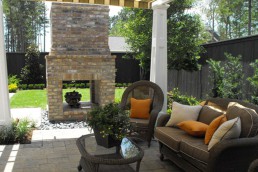Five Things You Must Do Before Building A Pergola
Building a pergola and including it in your outdoor space can increase the value of your home and enhance your outdoor living experience. Before building a pergola, consider the following five points to ensure a smooth outdoor living project.
1. Get to Know the Frost Depth in Your Area
Frost depth is the level to which the ground in your area freezes each year. When inserting the support beams of your pergola into the earth in your backyard, you need to ensure that you’re going below the frost level. If a beam sits well up within the frost zone, all of the freezing and thawing that happens each winter will work to thrust the beams up and out of their holes and ruin the structure. You can verify your region’s frost depth by checking with your local building authority.
2. Check Your Permits
When you’re on the phone with your local building authority, take the time to also verify whether or not you need a special permit for this project. It’s not likely, since pergolas aren’t technically completed structures, but you will very likely need a permit if you plan on using electricity in your pergola to power accessories such as lights and fans. In contrast, you can avoid permits for electrical work by accessorizing using low voltage outdoor living items. If you live in an HOA, make sure that you check with your board to confirm that building a pergola is acceptable.
3. Contact Your Local Utilities
You will also want to reach out to your local utilities before building a pergola. Many backyard DIYers have started digging into the ground only to run into gas or electric lines. This can be dangerous and expensive to fix, so make sure that you check with the utility companies in your area first. They will come out and mark any lines in your yard for you to prevent an accident from happening.
4. Consider Pergola Materials
Pergolas today come in cedar, redwood, pressurized pine, and other woods. While pine is perhaps the most cost-effective, it is also the least attractive wood. Cedar and redwood are both radiant and good-looking woods, in addition to being rot and insect-resistant. Redwood and ipe come at a much higher price point but are considered very stylish woods used in modern architecture. If you are looking for the best value, western red cedar delivers a stylish and cost-effective solution. Ultimately, the factors you should consider when choosing the wood for your pergola include your environments humidity and temperature fluctuations, the insects in your region, and your budget.
There are also alternative materials you can consider in a pergola kit. Ready-to-assemble pergola kits today can come in aluminum, vinyl, and fiberglass, giving consumers a stylish and practical way to building a pergola.
5. Consider Sun and Rain Protection
While a pergola can provide some minimal shade due to its open beam structure, it’s certainly no match for a truly hot summer day or a rainstorm. Many pergola owners choose to leverage canopies in tandem with their pergolas to protect against the elements. A custom canopy solution can add weeks to the amount of time you can enjoy your pergola, while protecting furniture or accessories you use in this outdoor space.
Building a pergola in your outdoor space can be a great addition to your home. Considering these tips will help you build a pergola that is safe, comfortable, and up to code. Have any tips of your own? Let us know.
Retractable Solutions for Outdoor Spaces
Please complete the form below to download our free eBrochure.
Price List included
Related Posts
October 10, 2013
Five Pergola Lighting Ideas to Illuminate Your Outdoor Space
September 3, 2013
Five Ways to Extend Your Outdoor Living Space Season
June 16, 2012



